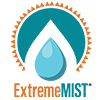Quenching the Thirst Within: A Practical Guide to Daily Hydration Monitoring

Water is the essence of life, and staying properly hydrated is crucial for our overall well-being. Yet, many of us often overlook our daily water intake, leading to various health issues. Monitoring your hydration level every day is a simple yet effective way to ensure you're getting the right amount of water your body needs. We'll explore why hydration is essential, signs of dehydration, and practical tips on how to monitor your hydration level daily.
Understanding the Importance of Hydration
Water plays a vital role in maintaining bodily functions. It aids digestion, regulates body temperature, lubricates joints, and helps transport nutrients to cells. When you're not properly hydrated, your body can't perform these functions efficiently, leading to fatigue, headaches, and even more severe health problems.
Signs of Dehydration
Recognizing the signs of dehydration is the first step in monitoring your hydration level effectively. Common symptoms include dark yellow urine, dry mouth, dizziness, and lethargy. If you experience any of these signs, it's a clear indicator that you need to drink more water.
Tips for Monitoring Your Hydration Level
-
Set a Daily Goal: Aim to drink at least eight 8-ounce glasses of water a day, also known as the 8x8 rule. Adjust this based on your activity level, climate, and individual needs.
-
Use a Water Bottle: Carry a reusable water bottle with you wherever you go. Having it within reach will remind you to sip water throughout the day.
-
Track Your Intake: Use apps or simple pen-and-paper methods to record your daily water intake. There are numerous apps available that can help you set goals, track your water consumption, and send reminders to drink water.
-
Monitor Your Urine: The color of your urine can tell you a lot about your hydration level. Clear or light-colored urine usually indicates adequate hydration, while dark yellow or amber-colored urine suggests dehydration.
-
Listen to Your Body: Thirst is your body's way of telling you it needs water. Don't ignore it. Whenever you feel thirsty, take a break and have a drink.
-
Balance Electrolytes: If you're engaging in intense physical activity, consider hydrating with sports drinks or coconut water to replenish lost electrolytes along with water.
-
Consider Your Diet: Foods high in water content, such as fruits and vegetables, can contribute to your overall hydration. Include hydrating foods like cucumbers, watermelon, and oranges in your diet.
-
Pay Attention to Your Environment: Hot weather, high altitudes, and air-conditioned environments can increase water loss through sweating and evaporation. Be mindful of these factors and adjust your water intake accordingly.
Monitoring your hydration level every day might seem like a small effort, but it can significantly impact your overall health and well-being. By being mindful of your water intake, listening to your body, and making conscious choices, you can ensure that you stay properly hydrated and energized throughout the day. Remember, a well-hydrated body is a healthy body. So, drink up and take a step towards a healthier you!
0 comentarios


